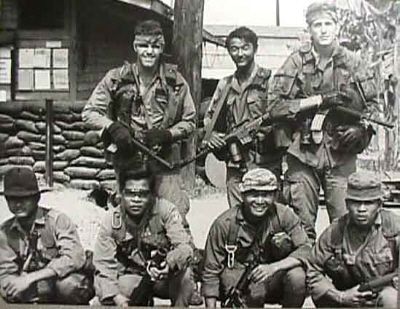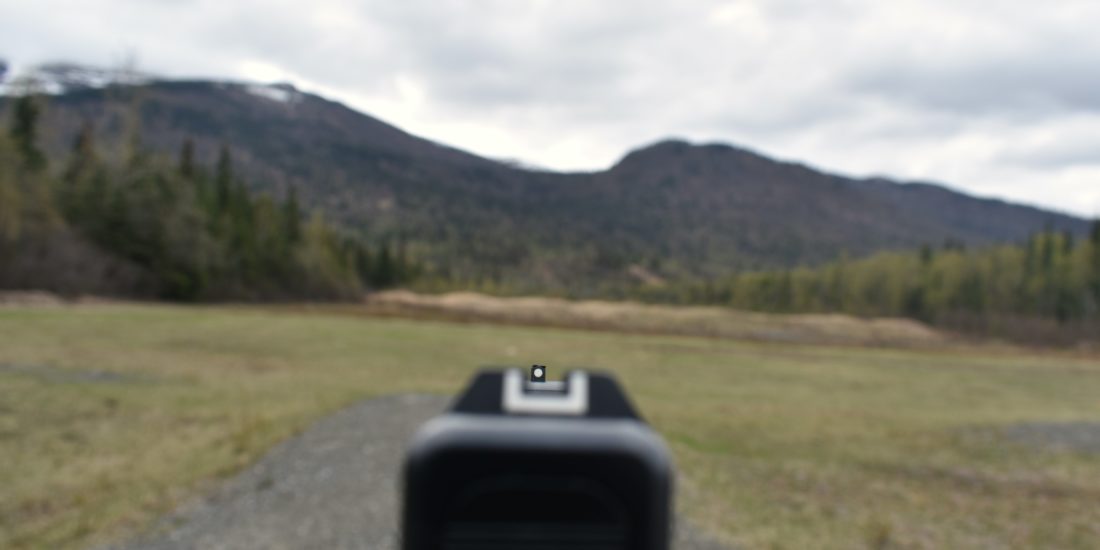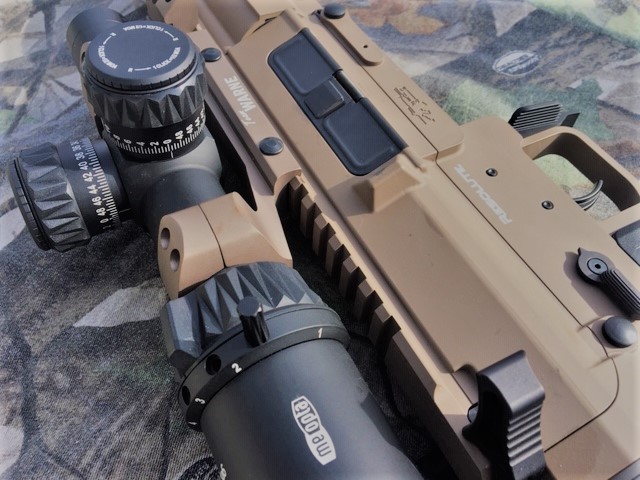Think Like a Green Beret | Worst-Case Thinking

“If your bayonet breaks, strike with the stock. If the stock gives way, hit him with your fists. If your fists are hurt, bite him with your teeth.”—General Mikhail I. Dragomirov, “Notes for soldiers,” 1890
The JFK Special Warfare Center is dedicated to reshaping the thought patterns of their students. They put out a lot of techniques and facts, but those things change over time. The enduring lessons of the Special Forces course are not facts or what to think, but how to think. In difficult circumstances, it can be the difference between life and death, victory or defeat.
When a Green Beret gets a mission briefing, the intelligence guys talk a lot, but they always give you these two things: the enemy’s most likely course of action and the enemy’s most dangerous course of action. Your job in planning is to come up with a way to defeat that most dangerous course of action while accomplishing your mission. Simple in concept, much more difficult in practice.
You might think that planning for the worst case is defeatist and negative. Most people live in denial of the worst case. When you got in the car this morning, you probably didn’t consider that a bloody accident was one possible outcome. If you did, I bet you have a trauma kit and a fire extinguisher in your car.
The worst case is very unpleasant and almost never necessary, but if that terrible day ever comes, a little planning can prevent a lot of bleeding and maybe some dying. When the worst case comes, you need to recognize it quickly and react. Often the unprepared mind reacts with denial and indecision. This is often the last mistake made by amateurs. “Surely, this cannot be happening!”
In the summer of 1967, Captain Franklin C. Willoughby took command of Detachment A-101 at Lang Vei, South Vietnam. His mission was to provide border surveillance, interdiction of enemy infiltration, and assistance in the Revolutionary Development Program in support of the Marines stationed 4.3 miles west in Khe Sanh. The A-101 tactical area of responsibility (AOR) was 85 square miles of jungle.
This was a big job, and Captain Willoughby had a lot of help. His ODA was working jointly with a 14-man South Vietnamese Special Forces team and six interpreters. The captain commanded a reinforced battalion with one Montagnard company, three South Vietnamese rifle companies, three combat reconnaissance platoons, and a mobile strike force company. A conventional force of this size would be commanded by a lieutenant colonel hand-picked by a command board of United States Army colonels. In a conventional unit, every one spoke the same language.
The strongest unit he had was the mobile strike force company. With 161 Hre tribesmen and six Special Forces advisers, they operated from a fortified bunker 800 meters west of the camp and provided early warning of attack for the main camp. During the day they conducted patrols; at night they ran ambushes. Willoughby had also been promised support from at least two rifle companies of the United States 24th Marine Regiment based at Khe Sanh upon request.
His worst case? A regular North Vietnamese Army division attacking with armor support. Some people argued that the NVA had never used armor. Frank Willoughby asked for anti-tank weapons. Heavy weapons were a little scarce; each company had one 81mm mortar, and there were two 4.2-inch mortars and 19 60mm mortars in and around the camp. Mortars are not effective against tanks. For tanks, he got two 106mm recoilless rifles and 100 brand new but unproven disposable M-72 light anti-tank weapons (LAWs).
Sometimes, bad things happen. Late in 1967, escaping detection, the North Vietnamese 304th Division entered the AOR, reinforced by the 198th Tank Battalion with PT-76 amphibious tanks. CIDG soldiers from Lang Vei started making contact with recon elements of the NVA force. The Lang Vei Special Forces Camp got mortar and artillery fire two or three times a week. North Vietnamese patrols probed the perimeter.
On January 21, 1968, the elements of the North Vietnamese 304th Division attacked Khe Sanh village, capturing it the next day. The Marines at Khe Sahn base did not intervene. A South Vietnamese company counterattacked and was destroyed as they marched toward the village.
Attacking at sunset on 23 January, the PT-76 tanks and supporting infantry of the North Vietnamese 304th Division destroyed a Laotian outpost at Ban Houei Sane manned by 700 Laotian soldiers of BV-33 ‘Elephant’ Battalion, Royal Laotian Army. After three hours of fighting, BV-33 abandoned the post and withdrew toward Lang Vei, just across the border in South Vietnam.
With civilians and soldiers fleeing the fighting, Willoughby now had an estimated 8,000 non-combatants within a half mile of his camp. When he asked headquarters for help, he got food and medical supplies. Since there was an NVA division with a tank battalion in the area, they also sent a six-man Special Forces augmentation team. By this time, Willoughby knew exactly what he was facing. The Laotian soldiers of BV-33 and a North Vietnamese deserter confirmed the presence of a large enemy force with PT-76 tanks in the AOR.
On February 6 at 23:30, North Vietnamese artillery started hitting the Lang Vei Special Forces camp. The 304th Division attacked the camp from three directions, each attack led by PT-76 tanks. The 106mm recoilless rifles immediately killed three tanks, but were soon destroyed and the wire was breached.
Underground, in his tactical operations center, Willoughby was on the radio calling for air and artillery support. The 26th Marines Regiment at Khe Sanh refused his request for the deployment of two rifle companies. A U.S. Air Force forward air controller quickly arrived over Lang Vei along with a flare ship and an AC-119 Shadow gunship, which began tearing holes in the NVA formations.
By 01:15, the North Vietnamese had captured the eastern end of the Special Forces camp and were shooting across the camp. On the western end of the camp, three PT-76 tanks rolled through the barbed wire. North Vietnamese tank crews were destroying bunkers with their main guns, forcing defenders from their positions. Eight hundred yards to the west, the mobile strike force position was overrun by the NVA tanks.
Ad hoc tank-killer teams engaged the North Vietnamese tanks all across the camp. The M-72 LAW rockets were largely ineffective. By 02:30, the North Vietnamese had broken through the inner perimeter of the camp and attacked the tactical operations center, which held Willoughby, seven other Americans, three South Vietnamese Special Forces soldiers, and 26 CIDG soldiers. Some of the American and Vietnamese soldiers escaped the camp through a dry river bed. Another request for reinforcements was denied.
The NVA surrounded the command bunker, attacking with hand grenades, explosives, and gunfire. Shortly after 6:00 A.M., the North Vietnamese threw several fragmentation grenades and tear gas grenades down the stairwell, then shouted down in Vietnamese, demanding surrender. The South Vietnamese Special Forces commander led his troops up the stairwell. They were immediately killed by the North Vietnamese, leaving only the Americans. A brief poly-lingual discussion and a mutual exchange of fire established that the Americans had no desire to surrender. At 6:30 A.M., the North Vietnamese blasted a hole in the bunker wall and continued to throw grenades, but did not assault.
A couple of miles away, Sergeant First Class Eugene Ashley coaxed 100 obviously unenthusiastic Laotian soldiers from BV-33 to counterattack and rescue the survivors at Lang Vei. Three consecutive attacks failed, and Ashley was fatally wounded.
Amazingly, Willoughby and his men in the bunker broke out during an airstrike and eventually made it the Marine base at Khe Sanh. The combined Montagnard and South Vietnamese CIDG fought bravely and took heavy casualties: 309 killed, 64 wounded, and 122 captured. Of the original 24 Americans at Lang Vei, seven were killed in action, 11 sustained injuries, and three were captured.
This isn’t a story of victory; it was a bloody defeat. The takeaway is that it should have been much worse. Had Willoughby not prepared for the worst case, there may have been no survivors. The efforts of the defenders of Lang Vei absorbed the brunt of the 304 Division’s attack, disrupting and delaying their efforts against their main target, the Marine airfield at Khe Sahn.
There is an old superstition that thinking about bad things can make them come true. Green Berets plan for the worst case, but they don’t dwell on it. The preparations at Lang Vei couldn’t keep bad things from happening, but they saved lives and stopped a force 10 times their size, led by tanks.
Think like a Green Beret. Accept that sometimes the worst possible thing will happen and get ready. You may lose your camp but live to fight another day. Once you have prepared yourself for the worst case, minor setbacks seem less important and easier to deal with. When the NVA only attacks with a regiment, you feel lucky it isn’t a division and they don’t have tanks. Be grateful for the problems you face; things can always get worse.






